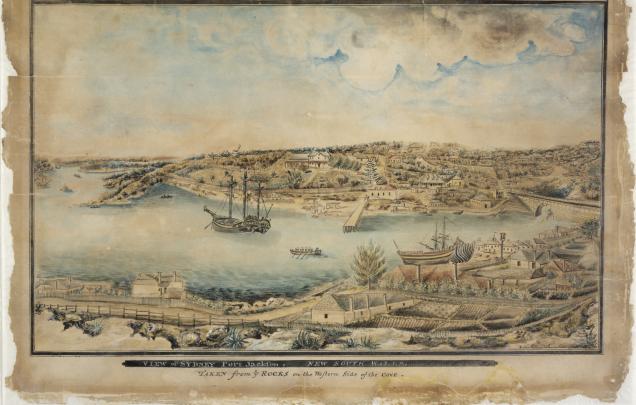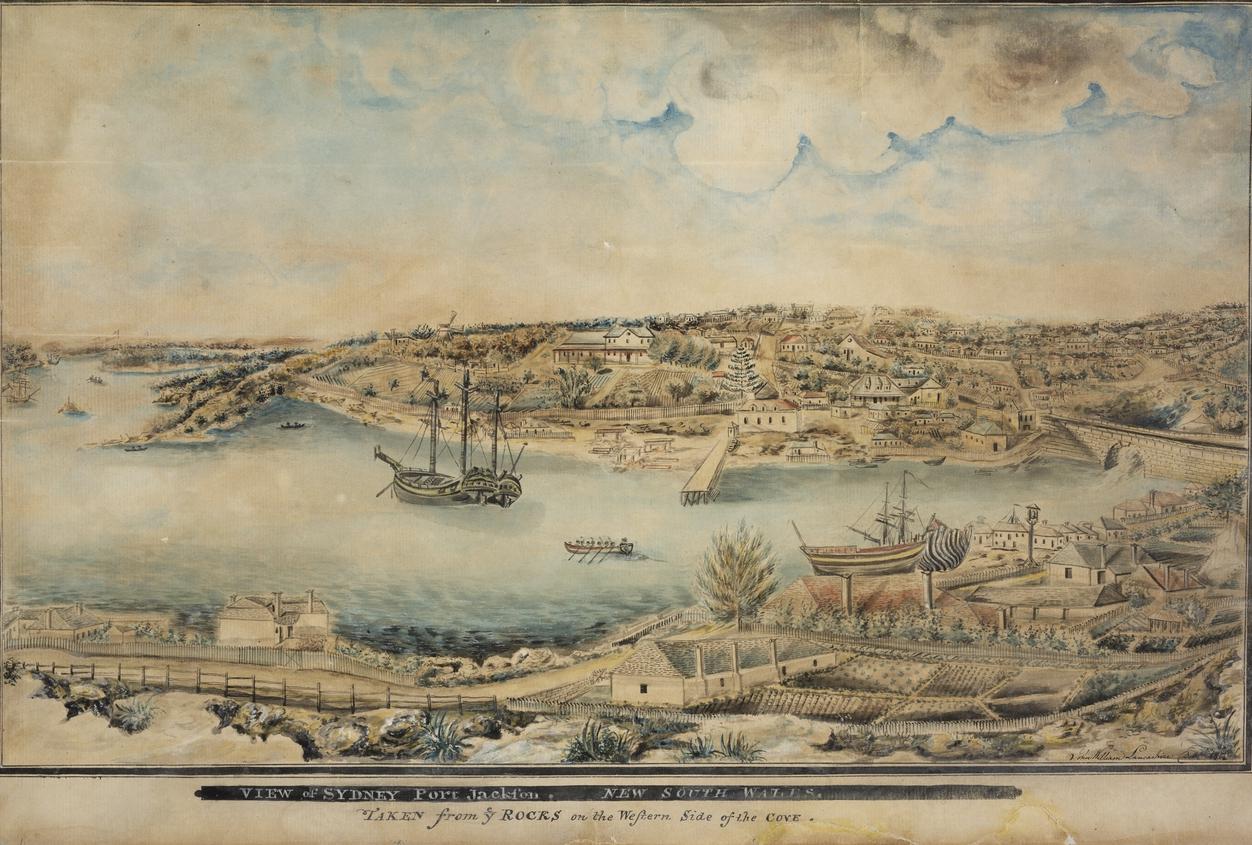The flag’s up!
Students experience the anticipation and long wait for news and letters to arrive in the colony.

The flag’s up!
The colony had no phones for texts, tweets or news, and no newspapers for reading. Messages from the outside world all had to come by ship, and that could take months. Life in the colony in 1790 was also getting much more difficult; everyone’s clothing was falling apart, the food rations had been reduced and everyone was eagerly awaiting the arrival of ships with much-needed supplies and letters from home. All of the colonists, including the convicts, were waiting and waiting…
Read what Captain Watkin Tench writes in his journal in early 1790:
…we were on the tiptoe of expectation… A party of seamen were …on … South-head, at the entrance of the harbour, on which a flag was ordered to be hoisted, whenever a ship might appear … Here on the summit of the hill, every morning from daylight until the sun sunk, did we sweep the horizon, in hope of seeing a sail.
And when they didn’t see one or there was a false sighting, Watkin Tench says:
To say that we were disappointed and shocked, would very inadequately describe our sensations. But the misery and horror of such a situation cannot be imparted, even by those who have suffered under it.
But then a ship finally arrived:
…on the evening of the 3d of June, the joyful cry of “the flag's up,” resounded in every direction. I was sitting in my hut, musing on our fate, when a confused clamour in the street drew my attention. I opened my door, and saw several women with children in their arms running to and fro with distracted looks, congratulating each other, and kissing their infants with the most passionate and extravagant marks of fondness. I needed no more; but instantly started out, and ran to a hill, where, by the assistance of a pocket glass, my hopes were realized. My next door neighbour, a brother-officer, was with me; but we could not speak; we wrung each other by the hand, with eyes and hearts overflowing.
Read Captain John Hunter’s recollections:
news was all over the Settlement in a few Minutes, Men, Women & Children were running in different directions. I took a Spy Glass & went to the place from whence the Ship had been seen & there to my very great Comfort & happiness, I observd a Ship with an English Ensign flying.
Find the adjectives that describe everyone’s emotions, both before and after the ship they were waiting for arrived.
Define the word spy-glass.
Answer this question:
- Watkin Tench calls his spy-glass a pocket-glass. Why?
Make a ‘spyglass’ out of simple and easy to find resources like recycled cardboard and stickytape/glue. The convicts of the First Fleet would not have had one but they might have ‘pilfered’ one to use!
Define the word pilfer.
Look at a painting of Sydney, below. Click on the image and then click through until you can zoom in to locate the South Head camp and the flagpole.
Play Flag’s Up! in your classroom. Instructions for this activity are in the Additional Information section. Randomly, throughout the day, your teacher calls out “the flag’s up!” (which means that a ship has been spotted out at sea from South Head.) Everyone runs over a pre-determined window/s in your classroom to look for a ship or the flag with your hand-made ‘spyglasses’.
Discuss: The reliance on food from arriving ships was very real. Communication was difficult if you were far away. Imagine the waiting, worry and disappointment. On a positive note there was a sense of ‘all being in this together’ and sharing in the excitement of a ship appearing on the horizon.
